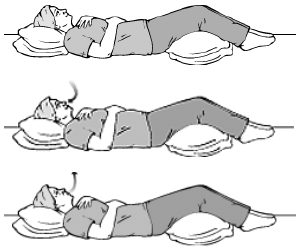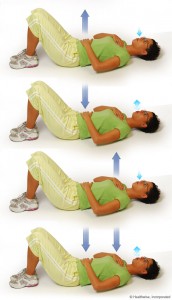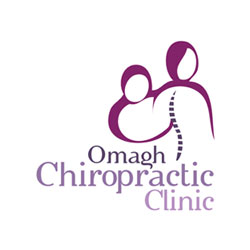Breathe Deeper to Improve Health and Posture
 You might be amazed to learn that the way you breathe can impact your whole body, helping to regulate important functions such as heart rate and blood pressure, as well as reinforcing proper body mechanics that put less stress and strain on the body as you move. Deep breathing is associated with better health, yet the busy pace of life, coupled with a sedentary work environment, has conditioned many of us to only take quick, shallow breaths. Over time, this weakens the strength of our respiratory muscles and creates tension in the upper body that can alter our posture and undermine our health. If you are a shallow breather, regular physical activity and brief sessions of respiratory muscle training can reverse these symptoms and help to improve your quality of life.
You might be amazed to learn that the way you breathe can impact your whole body, helping to regulate important functions such as heart rate and blood pressure, as well as reinforcing proper body mechanics that put less stress and strain on the body as you move. Deep breathing is associated with better health, yet the busy pace of life, coupled with a sedentary work environment, has conditioned many of us to only take quick, shallow breaths. Over time, this weakens the strength of our respiratory muscles and creates tension in the upper body that can alter our posture and undermine our health. If you are a shallow breather, regular physical activity and brief sessions of respiratory muscle training can reverse these symptoms and help to improve your quality of life.
How Do We Breathe?
Air is inhaled and exhaled by active contractions of the respiratory muscles that surround our lungs. During inhalation, the diaphragm contracts to create space in the chest cavity for the lungs to expand. The intercostal muscles, located between the ribs, assist the diaphragm by elevating the rib cage to allow more air to be taken into the lungs. Accessory muscles around the neck and collarbone assist the intercostals if breathing becomes impaired. These muscles, which include the sternocleidomastoid, serratus anterior, pectoralis minor and scalenes, all increase the speed and amount of movement the ribs are capable of (NIH, 2012).
Different Factors That Affect Breathing Rate
Our breathing rate can vary with age, weight, tolerance to exercise, and general health. For the average adult, a normal breathing rate consists of 12 – 18 breaths per minute. However, several factors can impair respiratory function, creating a pattern of quick, shallow breathing. Sudden or chronic pain, as well as emotional state, activate a division of our autonomic nervous system that governs many bodily systems, such as heart rate, body temperature, breathing rate, and digestion. Chronic stress and strong emotions, such as rage or fear, all intensify our “fight or flight” response, which can impair the way these systems function (Martini, et al. 2012). Poor posture also contributes to breathing pattern dysfunction, which is commonly seen in those who spend long hours sitting each day. Rounded shoulders and a forward head posture cause the muscles around the chest to tighten, limiting the ability of the rib cage to expand and causing us to take more rapid, yet more shallow breaths.
How Posture and Breathing Affect Movement
Breathing from the chest relies on secondary muscles around the neck and collarbone instead of the diaphragm. When this breathing pattern is accompanied by poor posture, many muscles in the upper body lose their ability to properly function. The longer we sit during the day, the less our body is able to fight the forces of gravity and maintain a strong, stable core. Tight accessory muscles around the chest, in particular the pectoralis minor and scalenes, cause a rounded shoulder and forward head posture. This weakens the back by inhibiting the lattissimus dorsi, middle trapezius and rhomboids, as well as the quadratus lumborum, which help us maintain an upright posture. Tight accessory muscles can also cause shoulder instability and impingement syndromes by inhibiting the serratus anterior, biceps tendon, posterior deltoid and infraspinatus, which allow us to freely move our shoulder blades into a variety of positions.
Breathing exercises: 
There are lots of breathing exercises you can do to help relax. The first exercise below—belly breathing—is simple to learn and easy to do. It’s best to start there if you have never done breathing exercises before. The other exercises are more advanced. All of these exercises can help you relax and relieve stress.
Belly breathing
Belly breathing is easy to do and very relaxing. Try this basic exercise anytime you need to relax or relieve stress.
- Sit or lie flat in a comfortable position.
- Put one hand on your belly just below your ribs and the other hand on your chest.
- Take a deep breath in through your nose, and let your belly push your hand out. Your chest should not move.
- Breathe out through pursed lips as if you were whistling. Feel the hand on your belly go in, and use it to push all the air out.
- Do this breathing 3 to 10 times. Take your time with each breath.
- Notice how you feel at the end of the exercise.
Next steps
After you have mastered belly breathing, you may want to try one of these more advanced breathing exercises. Try all three, and see which one works best for you:
- 4-7-8 breathing
- Roll breathing
- Morning breathing
4-7-8 breathing
This exercise also uses belly breathing to help you relax. You can do this exercise either sitting or lying down.
- To start, put one hand on your belly and the other on your chest as in the belly breathing exercise.
- Take a deep, slow breath from your belly, and silently count to 4 as you breathe in.
- Hold your breath, and silently count from 1 to 7.
- Breathe out completely as you silently count from 1 to 8. Try to get all the air out of your lungs by the time you count to 8.
- Repeat 3 to 7 times or until you feel calm.
- Notice how you feel at the end of the exercise.
Roll breathing
Roll breathing helps you to develop full use of your lungs and to focus on the rhythm of your breathing. You can do it in any position. But while you are learning, it is best to lie on your back with your knees bent.
- Put your left hand on your belly and your right hand on your chest. Notice how your hands move as you breathe in and out.
- Practice filling your lower lungs by breathing so that your “belly” (left) hand goes up when you inhale and your “chest” (right) hand remains still. Always breathe in through your nose and breathe out through your mouth. Do this 8 to 10 times.
- When you have filled and emptied your lower lungs 8 to 10 times, add the second step to your breathing: inhale first into your lower lungs as before, and then continue inhaling into your upper chest. Breathe slowly and regularly. As you do so, your right hand will rise and your left hand will fall a little as your belly falls.
- As you exhale slowly through your mouth, make a quiet, whooshing sound as first your left hand and then your right hand fall. As you exhale, feel the tension leaving your body as you become more and more relaxed.
- Practice breathing in and out in this way for 3 to 5 minutes. Notice that the movement of your belly and chest rises and falls like the motion of rolling waves.
- Notice how you feel at the end of the exercise.
Practice roll breathing daily for several weeks until you can do it almost anywhere. You can use it as an instant relaxation tool anytime you need one.
Caution: Some people get dizzy the first few times they try roll breathing. If you begin to breathe too fast or feel lightheaded, slow your breathing. Get up slowly.
Morning breathing
Try this exercise when you first get up in the morning to relieve muscle stiffness and clear clogged breathing passages. Then use it throughout the day to relieve back tension.
- From a standing position, bend forward from the waist with your knees slightly bent, letting your arms dangle close to the floor.
- As you inhale slowly and deeply, return to a standing position by rolling up slowing, lifting your head last.
- Hold your breath for just a few seconds in this standing position.
- Exhale slowly as you return to the original position, bending forward from the waist.
- Notice how you feel at the end of the exercise.
Sources:
- Martini, F., Nath, J., & Bartholomew, E. (2012). Fundamentals of anatomy & physiology – the respiratory system. (9 ed.). San Francisco: Benjamin Cummings. Retrieved from http://www.as.miami.edu/chemistry/2086/chap23/the%20respiratory%20system%20part%202.htm
- The respiratory system. (2012). NIH. U.S. Department of Health and Human Services, National Heart, Lung and Blood Institute. Retrieved from http://www.nhlbi.nih.gov/health/health-topics/topics/hlw/system.html
- Sheel, A. (2002). Respiratory muscle training in healthy individuals: physiological rationale and implications for exercise performance. Sports Medicine, 32(9), 567-81. Retrieved from http://www.ncbi.nlm.nih.gov/pubmed/12096930
- WebMD Medical Reference from Healthwise : http://www.webmd.com/balance stress-management/stress-management-breathing-exercises-for-relaxation




